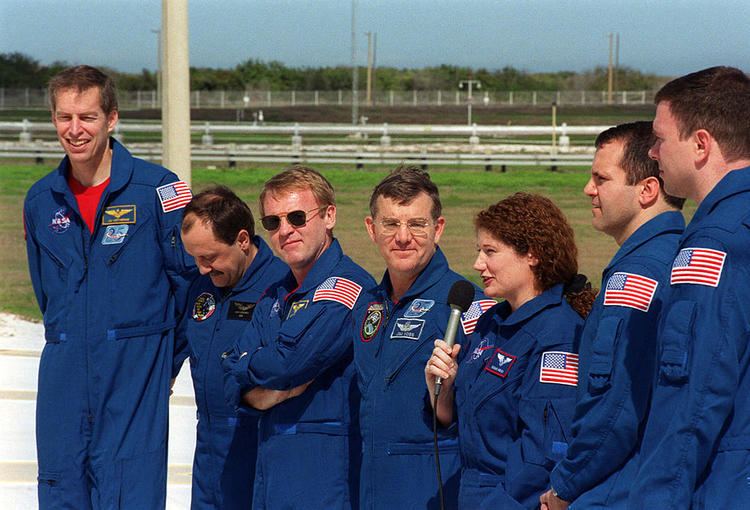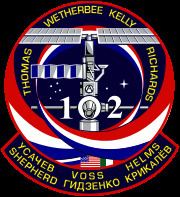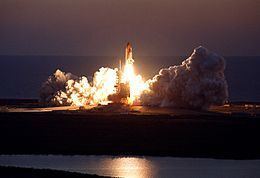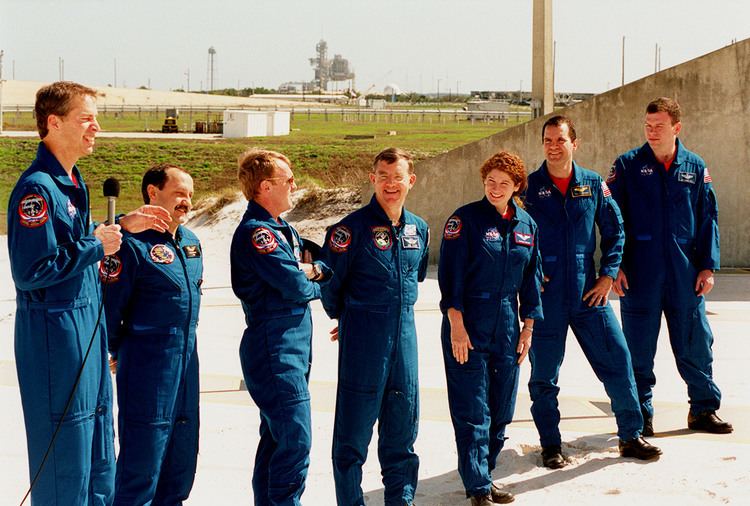Mission type ISS crew rotation SATCAT no. 26718 Apogee 381,000 m Dates 8 Mar 2001 – 21 Mar 2001 | COSPAR ID 2001-010A Period 1.5 hours Launch date 8 March 2001 Landing date 21 March 2001 | |
Mission duration 12 days, 19 hours, 51 minutes, 57 seconds Distance travelled 8.5 million kilometres (5.3 million miles) Members | ||
Sts 102 launch 3 8 01
STS-102 was a Space Shuttle mission to the International Space Station (ISS) flown by Space Shuttle Discovery and launched from Kennedy Space Center, Florida. STS-102 flew in March 2001; its primary objectives were resupplying the ISS and rotating the Expedition 1 and Expedition 2 crews.
Contents
- Sts 102 launch 3 8 01
- 2001 space shuttle flight 103 sts 102 discovery nasa
- Spacewalks
- Mission highlights
- Wake up calls
- References

2001 space shuttle flight 103 sts 102 discovery nasa
Spacewalks

Mission highlights

Space Station Assembly Flight ISS-5A.1 was the first use of the Multi Purpose Logistics Module (Leonardo) to bring supplies to the station. Also carried an Integrated Cargo Carrier (ICC). The ICC had the External Stowage Platform-1 mounted on its underside. ESP-1 was placed on the port side of 'Destiny' as a storage location for ORUs. The mission also included two spacewalks to relocate the units carried up by the ICC to the Destiny module exterior.
Wake-up calls

NASA began a tradition of playing music to astronauts during the Gemini program, which was first used to wake up a flight crew during Apollo 15. Each track is specially chosen, often by their families, and usually has a special meaning to an individual member of the crew, or is applicable to their daily activities.

